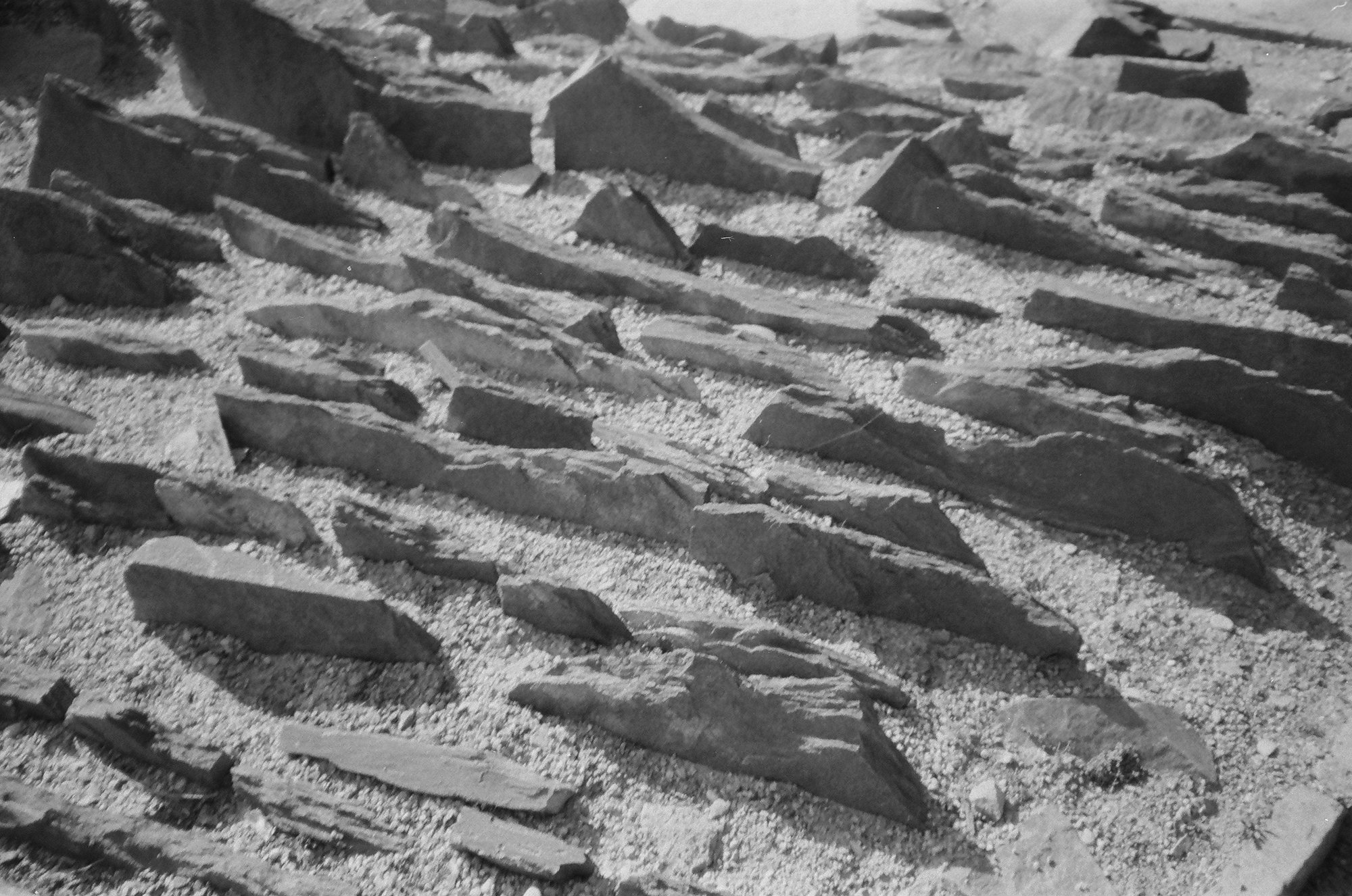
Becoming Geologic
A radio collage formed of lithic shapes of time, taking seriously the potential for intimacy with geologic materials. The product of more than two years of research into sensory and embodied forms of understanding change over time. It is a collection of essays, research, and even a meditation to help gesture at empathy for stones and gravel ... and maybe even a hunk of asphalt.
Humans look to rocks (in the fossil record) to read messages from the geologic past, and it is through stones that we might also communicate through deep time into the future, sending notes in strata. But perhaps more urgently, I wonder if we could develop a likeness to stone to understand what our actions might mean across vast expanses of time. To feel out being around for that long—to feel the eerieness that parts of you affect the world for thousands of years to come. Maybe it is a way to conceptualize vast ecological change happening at scales beyond our individual perception. Maybe its simply a way to slow the fuck down. Maybe it feels good to imagine yourself stuck together with other melancholy pieces of gravel, stranded here together.
In this episode, architect Hans Turksack (RPI, Syracuse University) shares his affinity for the animacy of rocks, and his interest in what he calls "inanimate material movement." He brings us a lovely discussion of speculative philosophy around animacy, through passages from NK Jemisin's Broken Earth sci-fi trilogy. I also share the film and writing of Maya Deren, who’s 1944 film “At Land” features geologic scenes which left me feeling a desire for contact with rocky cliff faces.
I also tell the story of Gregory Benford, a physicist who was a consultant for the US Governmnet to help design stone and concrete monuments meant to communicate the danger of nuclear waste sites 24,000 years into the future. It explains neo-geologic forms, like Fordite, a rock made from detritus leftover from auto production in Detroit. It describes a 1950s landfill in Queens which has ruptured into our present moment, producing new aggregate materials. I lead listeners through a geologic meditation, which is meant to help your own body aggregate with stones.
The world is co-created with humans and their materials; landscapes have always been a chimera of intervention and unruliness. In an era of climate change, any environment now necessarily exists in a fluid mesh between nature, humans, and feedback loops between the two; perhaps more importantly, it is comprised of the ideas, discourses, and imaginaries that drive the ideas of “nature” and “human” in the first place. Human-made materials and infrastructures often reinforce the perception of Modernist dualism and Humanist anthropocentrism. That is, the feeling that some spaces are concretely clearly outside of “nature,” including agriculture, high rises, fish tanks, oil rigs, Cheetos bags, and paved suburban roads. But the materials that make up these spaces do so only because they adhere to that imaginary—we have fused their materiality with a notion of a separate, rational, human world. As pure material, however, they continually re-manifest as and within landscapes as waste, as geology, as feral processes, as toxins, or as ruins and in the future, as geology. When I asked the state palentologist if asphalt would be considered geology in the future, when you looked at layers of strata in, say, a postindustrial town, she was only quiet for a moment before confirming.
Becoming Geologic is becoming toxic, becoming aggregate, becoming sticky and porous. This is a mutual process of digestion and metabolism between our bodies and rock, soil, and earth. Bodies which can sense the intensities of the falling apart, the emergent and the what-might-be. The real and the potential shimmer in and out of each other in the momentary intensities of the present. Fact and felt are indistinguishable as a body moves through space. It is only when we look to the past that our affective bodies evaporate, and rational accounts of geologic time favor universalized facts over precious felt experience itself.
This show contains audio contributions from an exhibition also titled Becoming Geologic that took place in Troy, NY in May of 2023.
Becoming Geologic I
Listen Above, or:


